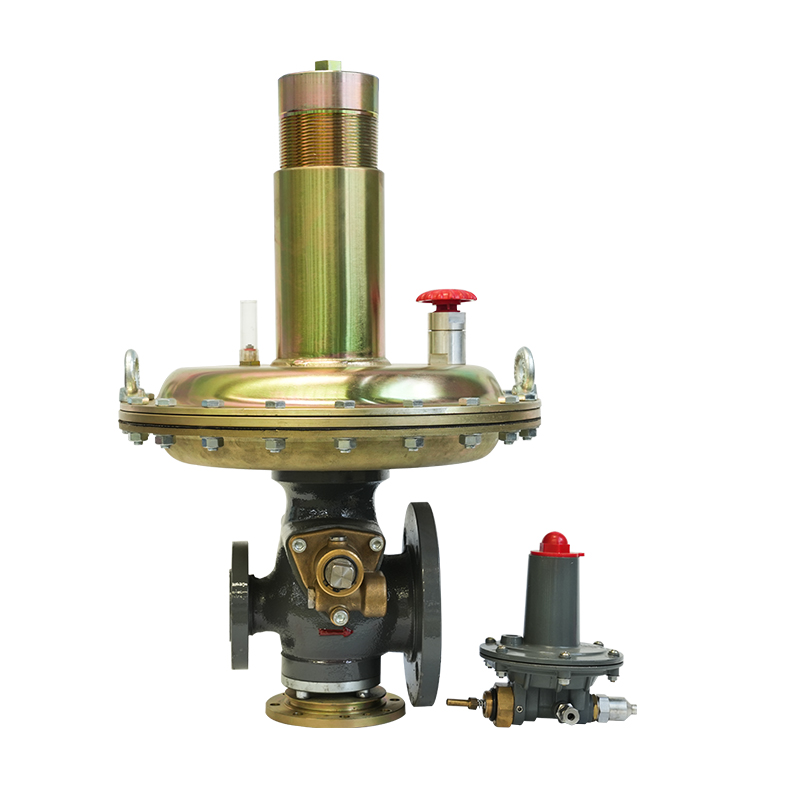PN16 DN50/DN80 flanged ductile iron Y-type strainer
PN16 DN50/DN80 flange ductile iron Y-type filter valve is a flange-connected ductile iron Y-type filter valve. PN16 means the nominal pressure is 1.6M...
See DetailsWithin the intricate network of gas pipelines that serves as the lifeblood of modern industry and urban living, a stable and secure pressure is the cornerstone of seamless operation. However, the high-pressure gas delivered from its source often far exceeds the capacity of downstream equipment. If this high-pressure gas were to flow unrestricted to the end-users, it could lead to equipment damage at best, and at worst, trigger serious safety incidents. This is precisely why the pipeline gas pressure reducing valve serves as a pivotal component in the system. It acts like a vigilant “gatekeeper,” meticulously “taming” the high-pressure upstream gas to maintain it within a specific range required by downstream equipment. Its presence not only protects the machinery but also serves as a critical defense line for life and property.

In a gas pipeline system, the collaborative function of the pressure reducing valve and the safety shut-off valve establishes a formidable safety barrier. The primary duty of the pressure reducing valve is to continuously regulate pressure, ensuring the downstream pressure remains within a predetermined, stable range. It achieves this through its internal mechanical components, which automatically sense and respond to fluctuations in upstream pressure by adjusting the valve’s opening. This action ultimately balances the pressure. The safety shut-off valve, on the other hand, plays the role of a final “emergency brake.” Should the pressure reducer fail for any reason, or if the downstream pressure suddenly rises or falls to an abnormal level, the shut-off valve reacts instantly and automatically closes, completely severing the gas supply. This integrated design flawlessly combines continuous regulation with immediate protection, ensuring that the system receives the most timely safeguarding possible in any extreme scenario, thereby significantly enhancing the operational safety of the entire gas network.
The operation of a gas pressure reducing valve can be likened to a sophisticated game of mechanical equilibrium. Its core components typically consist of a diaphragm, a spring, and a valve disc. High-pressure gas enters from the inlet, exerting force on the valve disc, attempting to push it open. Simultaneously, a pre-set pressure regulating spring applies an opposing force, aiming to close the valve disc. As the gas flows through the reducer, the downstream pressure is channeled through a feedback passage to the other side of the diaphragm. The diaphragm is linked to the valve disc, and any change in downstream pressure causes a displacement of the diaphragm, which in turn alters the valve disc’s opening. If the downstream pressure is too high, the diaphragm moves up, pulling the valve disc down to decrease the opening and restrict gas flow. Conversely, if the downstream pressure drops, the diaphragm moves down, increasing the valve disc’s opening to allow more gas to flow in. Through this dynamic, automatic balance, the pressure reducer can precisely maintain the outlet pressure at a stable setpoint without manual intervention, showcasing its ingenious engineering design.
With the rapid advancement of the Internet of Things (IoT) and automation technology, conventional gas regulator stations are undergoing a profound transformation. A modern remote-controlled pipeline regulator station is no longer just a simple assembly of mechanical devices. It’s a sophisticated system that integrates various sensors and intelligent control systems. By collecting real-time data on pipeline pressure, flow rate, and temperature, the station can upload this information to a remote monitoring center. Technicians can then, from anywhere, view the operational status and make remote parameter adjustments via a computer or mobile device. In case of anomalies, they can even issue remote commands to close the safety shut-off valve. This smart upgrade not only significantly boosts operational efficiency and reduces labor costs, but more importantly, it enables more comprehensive and precise monitoring of the entire gas network. The moment even a minor anomaly occurs, the system can quickly issue an alert and take action, neutralizing potential risks before they escalate.
Just like any precision mechanical equipment, gas pressure reducing valves require regular maintenance and upkeep. Due to their long-term operation in a high-pressure, high-velocity environment, wear and tear on the valve, fatigue of the spring, and aging of the diaphragm are all inevitable. Regular inspections—including checks of seals, tests of valve mobility, and calibration of pressure setpoints—are crucial for ensuring their continuous and stable operation. During daily use, if you notice abnormal fluctuations in downstream pressure, an inability to reach the setpoint, or signs of a gas leak, troubleshooting should be performed immediately. Common issues might arise from a fatigued spring, debris caught between the valve disc and seat, or a ruptured diaphragm. Timely troubleshooting and replacement of damaged components not only extend the equipment’s service life but, more fundamentally, eliminate potential safety hazards, ensuring a continuous and secure gas supply.
Contact Us